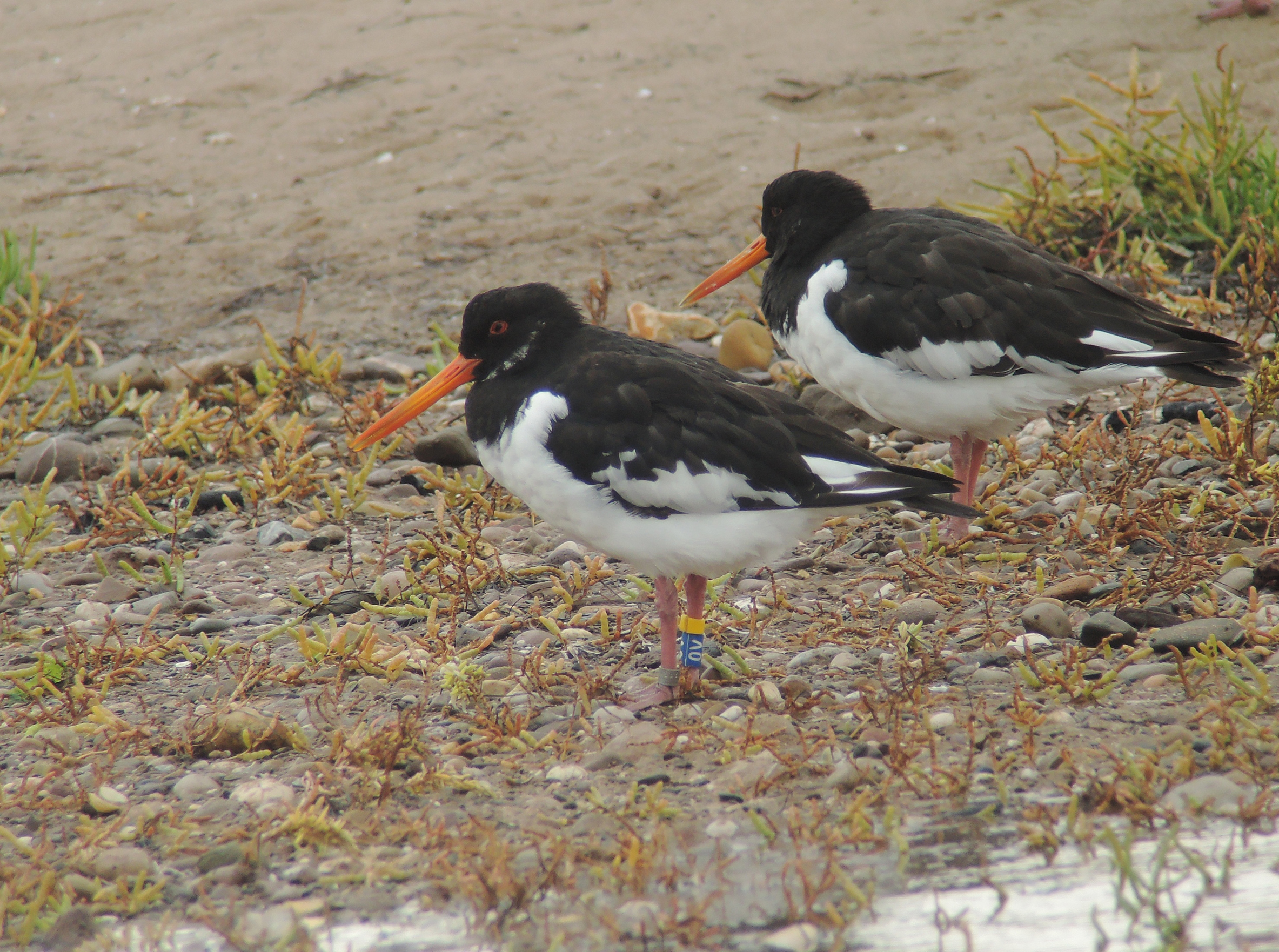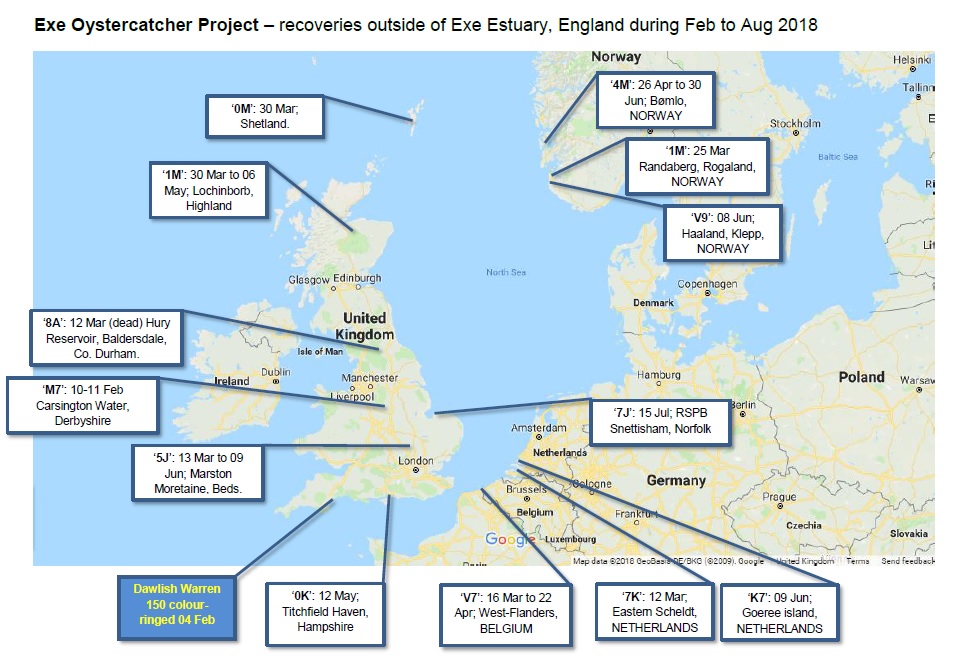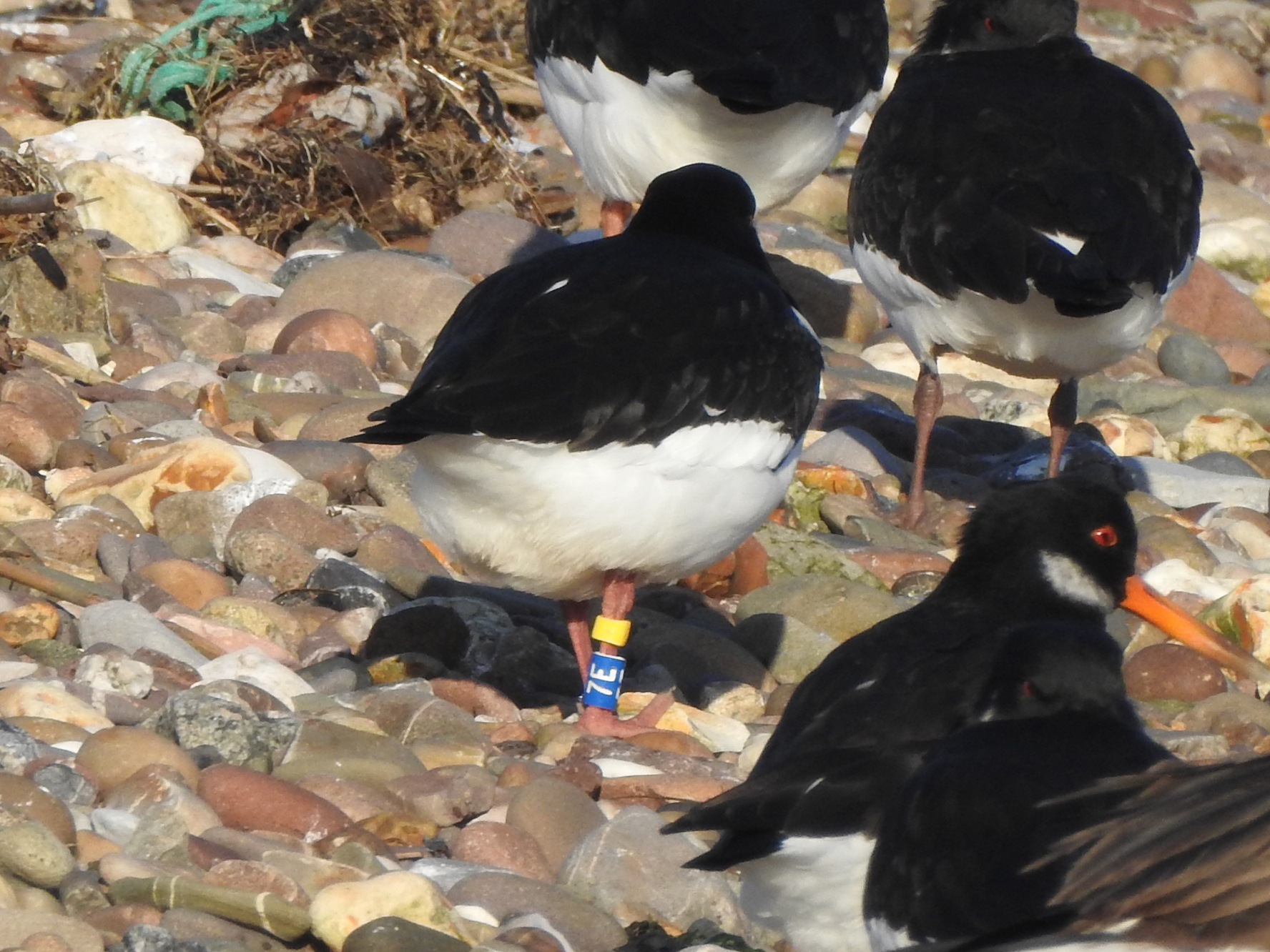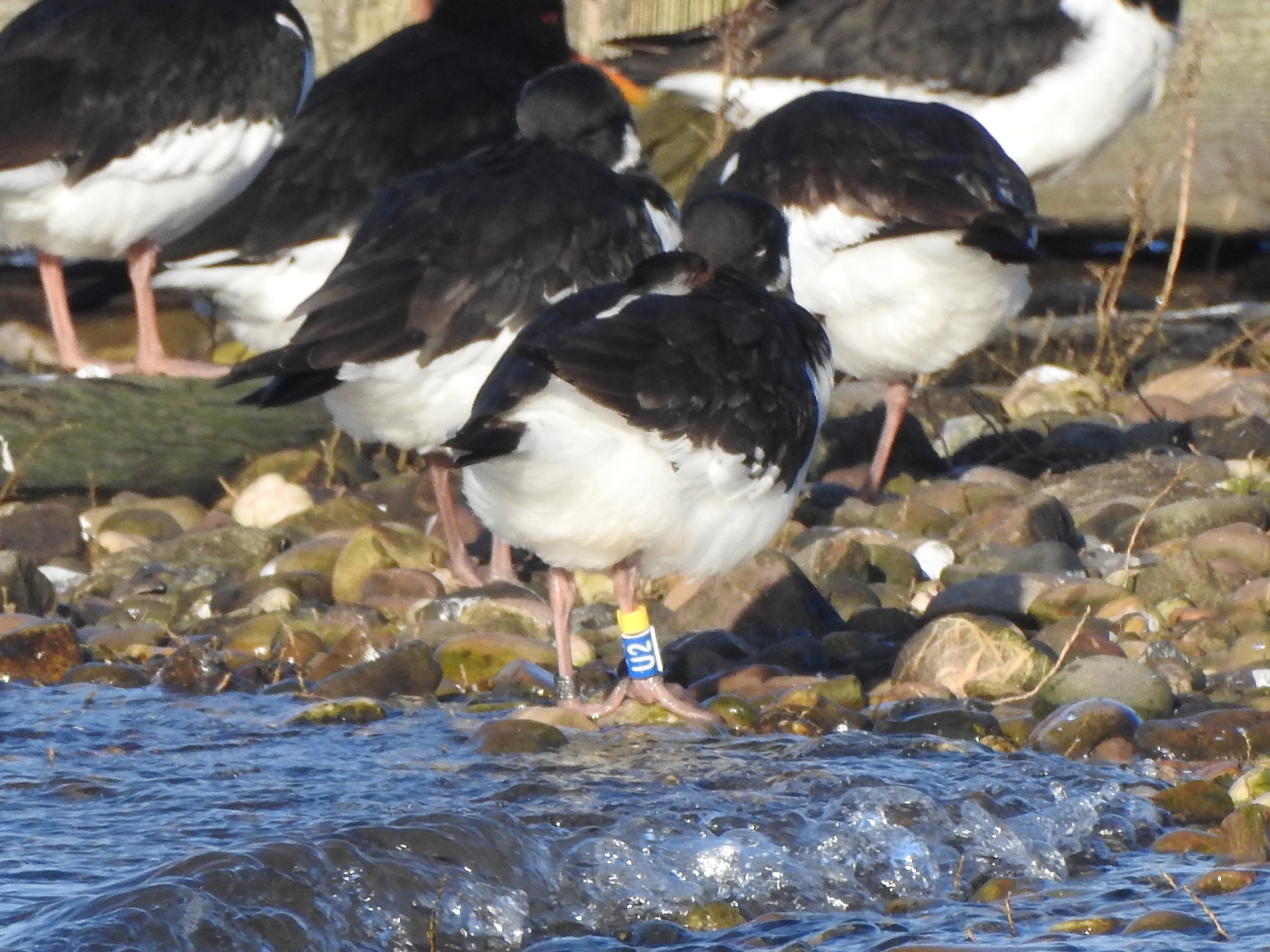Exe Estuary Oystercatcher Project
Sept 2018
Update
Any sightings of colour-ringed oystercatchers should be reported to
exeoystercatchers@gmail.com

It is seven months since 190 Oystercatchers were ringed at Dawlish Warren NNR. 150 of these individuals were fitted with a uniquely coded alphanumeric blue-coloured ring (and a small unmarked yellow ring) and the remaining 40 Oystercatchers had a standard BTO metal ring fitted. Age and biometric details were recorded. Wintering oystercatchers have been studied on the Exe Estuary for decades and from this we have learnt about their longevity, behaviour and site fidelity, but there is still much more to learn about their survival rates, habits and movements around the estuary, and where they are coming from.
With over one thousand Oystercatchers now back to winter on the Exe Estuary and
over one thousand sightings of the latest Exe ringed Oystercatchers now
received, this is an ideal time to take stock of what the project has been
achieved so far and to celebrate passing this amazing milestone.
So far, 140 of the 150 Oystercatchers colour-ringed on 04 February 2008 have
been recorded after ringing, an incredible return of 93.3%! Whilst most were
resighted at Dawlish Warren, some great stories have emerged from re-sightings
elsewhere. Thirteen project Oystercatchers have been seen in spring and summer
2018 away from the Exe.
The first big achievement came in the first week with the sighting of ‘M7’ at Carsington Water, Derbyshire on 10 February, just 6 days after it was ringed! It came as a great surprise that Exe Oystercatchers migrate this early. The next was sadly found dead on 12 March at Hury Reservoir, Baldersdale, Co. Durham; it was in bad condition and thought to have succumbed to the ‘Beast from the East’ weather systems. But one the next day was alive and well, seen near Marston Moretaine, a water park in Bedfordshire (‘5J’ reported 13 March – 09 June). Others were singles at Lochindorb in the Highlands (‘1M’, reported 30 March – 06 May) and Shetland (‘0M’ on 19 May). Further afield, two were seen in the NETHERLANDS (‘7K’ in Eastern Scheldt area on 12 March and ‘K7’ was on Goeree island on 09 June); one in BELGIUM (‘V7’ in West-Flanders region reported 16 March to 22 April); and three were recorded in NORWAY (‘7E’ at Randaberg, Rogaland on 25 March, ‘4M’ in Bømlo area 26 April to 30 June, and ‘V9’ at Haaland, Klepp on 08 June).

Not all of the Oystercatchers left the Exe as they take a few years to reach
breeding age and many immatures remain resident on the estuary. Through
recording at the main roosts at Dawlish Warren, it is thought that about 28
project birds over-summered, which is 20% of those re-seen. Looking back at the
details of these birds when inspected in the hand, it seems that only one of
these birds was noted as a full adult, 57% were juveniles from the previous
season and the remaining 39% were older immatures. However, of the 150 birds
colour-ringed in Feb, 70% were adults and only 13% were juveniles.
So, having discovered that only two-thirds of the wintering immatures remain for the summer, where do the rest go? A juvenile at Titchfield Haven, Hampshire on 12 May and an older immature at Snettisham, Norfolk on 15 July provided the first partial answers this question.
It gets better.
So far, half of the birds seen away from Devon have returned to be re-found at
Dawlish Warren this autumn. The first recorded returning bird was ‘5J’ (from
Marston Moretaine, Beds) back on 04 July; then ‘M7’ (from Carsington Water,
Derbyshire) on 18 July, and ‘1M’ (from Lochindorb, Scotland) back on 26 July.
Three from abroad returned later, ‘K7’ (back from Goeree island, NETHERLANDS)
was seen back at Dawlish Warren on 04 August; and two of the three that were
recorded in NORWAY returned in late-August (‘7E’ on 23 Aug and ‘4M’ on 25 Aug).
The first seven months of this project have exceeded expectations and there is
so much more to learn from these birds, please keep your eyes open and continue
to report any sightings to
exeoystercatchers@gmail.com In addition to the ring details, location and
date please submit as much additional information that you can be collect
including grid reference, behaviour, i.e. feeding or roosting, was it in a flock
or on its own, and if possible what the bird was feeding on, and any interaction
with other oystercatchers.
A big thank you to all the observers in Britain and throughout Europe who’ve
reported sightings so far:
Laurence Archibald, Clive Ashton, Graham Bell, Chris Bollen, Dave Boult, Lee Collins, Matt Collis, Carole Davis, Richard du Feu, Fred Fooks, Filip Goussaert, Steve Holliday, Steve Hopper, Dave Jewell, David Joicey, Alan Keatley, Mark King, Ivan Lakin, Marc van Leeuwen, Ivor McPherson, Gisle Oddane, Lars Økland, Martin Overy, Kevin Rylands, Einar Selvaag, Bernard Siddle, Dave Smallshire, Sander Terlouw, Richard Walden, Marcus Ward, Colin Weaver, Bernard Wingrove, Marcus Zoe. Thanks also to Teignbridge District Council for their continued assistance and support for the project. Apologies for any omissions.
 |
 |
It has to be noted that as you scan through the flock of Oystercatchers at
Dawlish Warren, or elsewhere, for the distinct blue-coloured rings, you may also
notice individuals from previous Exe studies, still sporting worn out ‘wasp
rings’, in addition birds colour-ringed in Scotland, Wales and Iceland are also
present in the Exe estuary flocks. Knowing what we do about a handful of birds
from the past 7 months, it’s humbling to think of the journeys and hardships
some of these other birds have endured, knowing as we do that some of them are
over 30 years old.
(posted on behalf of the Exe Oystercatcher project team)
Please send details of sightings of colour-ringed oystercatchers to: -
Thank you!
Text and map provided by Ivan Lakin. Pictures - Lee Collins (top) & Alan Keatley (lower two)